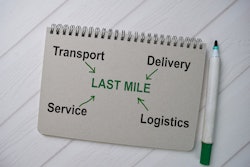
In today's fast-changing market, with evolving technology and rising customer expectations, companies face the tough challenge of improving their logistics operations. Partnering with third-party logistics (3PL) providers can help address these challenges.
Over the past few years, logistics outsourcing has changed a lot due to new technology. It's now seen as a smart decision that can improve operations and give a competitive edge. By working with the right mix of 3PLs and focusing on building deeper relationships, logistics leaders can add more value to their organizations.
Finding the best match for your organization is crucial. According to Gartner research, strategic relationships with an outsourcing partner are more likely to lead to longer contracts that save costs and improve services.
To build stronger relationships, organizations should implement a comprehensive warehouse performance management program. Without a solid plan to manage 3PL warehouse performance, both parties may be disappointed. Here are three areas to include in the framework:
1. A Governance Model that Fosters Communication
A governance model for a 3PL warehouse operation involves defining roles, responsibilities and communication protocols for both the 3PL and the shipper. Regular reviews and two-way feedback are essential to keep the partnership aligned with its goals. As needs change, regular reviews help the partnership adapt and adjust strategies and processes.
Additionally, work with 3PLs to set clear performance metrics that align expectations and objectives. This approach fosters transparency and helps identify areas for improvement. Metrics should include key performance indicators (KPIs) for each crucial process and align with your broader business goals, whether improving customer satisfaction, reducing costs or increasing efficiency.
2. Clear Performance Metrics Aligned to Shared Goals
Partnering with 3PLs to establish clear performance metrics is crucial for logistics leaders. Clear metrics serve as a common language that aligns expectations and objectives. This approach fosters transparency and helps identify areas for improvement. By defining key metrics for a successful warehouse operation, logistics leaders and 3PLs can achieve better results while building a strong partnership. Follow these steps to set clear performance metrics:
- Determine relevant KPIs for each key process in the operation that is critical to success. The goal is to identify five to seven of the most critical KPIs for your operation.
- Align KPIs with broader business goals, for customer, cost and efficiency.
- Ensure systems are in place to collect and analyze data for each KPI. Define data sources, collection methods, calculations, and target levels.
- Benchmark each KPI against industry standards.
3. A Continuous Improvement Plan That Promotes Collaboration
According to Gartner data, 67% of shippers said the biggest benefit of longer-term contracts with 3PLs is continuous improvement. A continuous improvement plan (CIP) identifies areas for enhancement, develops plans to address them, and monitors the effectiveness of implementation. It ensures the contract's ongoing relevance and mutual benefit.
Start by separating opportunities into tactical and strategic to prioritize actions and resources. Tactical elements guide day-to-day operations, while strategic elements set long-term goals, like investing in new technologies and workforce training.
To implement a CIP:
- Define clear and measurable objectives, such as increasing throughput, enhancing customer satisfaction, improving inventory accuracy, or reducing operational costs. Include CIP language in your SLA contract.
- Segment opportunities into tactical and strategic to balance immediate improvements with long-term growth.
- Monitor and evaluate progress using weekly operational meetings for tactical elements and quarterly business reviews for strategic elements.
Implementing a continuous improvement plan in a 3PL warehouse requires great communication, commitment, resources and time. However, the benefits, including customer satisfaction, efficiency gains, cost optimization and long-term competitive advantage, can be significant.

















![Pros To Know 2026 [color]](https://img.sdcexec.com/mindful/acbm/workspaces/default/uploads/2025/08/prostoknow-2026-color.mduFvhpgMk.png?ar=16%3A9&auto=format%2Ccompress&bg=fff&fill-color=fff&fit=fill&h=135&q=70&w=240)
